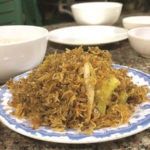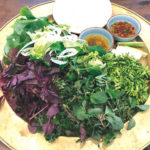Vietnam’s culinary culture has experienced a remarkable resurgence in recent years, as shown by the increasing number of Vietnamese eateries around the world and, most recently, the launch of the nation’s first Michelin-starred restaurants, according to experts from RMIT University.
 |
| Dr. Pham Huong Trang (L) and Dr. Jackie Ong (R). Photo: RMIT |
Dr. Pham Huong Trang, an academic from RMIT University Vietnam, has stated that the global recognition of Vietnamese cuisine has not only raised its status to new heights, but has also introduced international flavors and techniques to the Vietnamese culinary landscape.
Amidst a culinary revolution in Vietnam, the focus remains the same: preserving and celebrating the local touch that gives the country’s rich culinary heritage its unique flavor. At the center of this Vietnamese food renaissance is the appreciation and use of local ingredients,” said Dr. Trang, who has more than 15 years of experience in teaching and consulting in tourism and business management.
Michelin-starred restaurants have taken advantage of Vietnam’s rich land and sourced their ingredients directly from local farmers and markets. This approach of using local produce ensures the food is fresh, supports sustainable farming, and displays the unique flavors and textures of Vietnamese cuisine.
“From fragrant herbs and aromatic spices to exotic fruits and vegetables,” she said, “these restaurants celebrate the essence of Vietnamese gastronomy.”
Thriving Southeast Asian Destinations: A Journey with the Michelin Guide
Explore the bustling cities, vibrant cultures, and delicious cuisines of Southeast Asia with the help of the Michelin Guide. From Singapore to Thailand, Vietnam, Malaysia, and Indonesia, the region is full of destinations that offer something for everyone. With the Michelin Guide, you can find the best attractions, restaurants, and hotels for your next Southeast Asian adventure. Discover the region’s hidden gems and enjoy the unique experiences each country has to offer. So, start planning your journey today and get ready to explore the thriving destinations of Southeast Asia!
 |
| Hanoi-based Gia is recognized with one Michelin star for their high-quality cooking. Photo: Gia |
Dr. Trang noted that the Michelin Guide has had a significant impact on various Asian destinations, raising their culinary status and attracting international tourists. Countries like Thailand, Singapore, and Malaysia have experienced impressive transformations in their food scenes, with street food vendors and local eateries gaining recognition and acclaim.
Vietnam’s Culinary Potential Puts It on the World Map
 |
| Hanoi-based Tam Vi is labelled one Michelin star for their high-quality cooking. Photo: Tam Vi |
Dr. Trang believes that the arrival of the highly anticipated Michelin Guide in both Hanoi and Ho Chi Minh City has “solidified Vietnam’s status as a top culinary destination”.
She noted that even before this recognition, Vietnamese cuisine had already been highly ranked on global food lists, with its desserts and street food receiving particular praise. CNN Traveler has named Ho Chi Minh City the “culinary capital of Vietnam,” while The Telegraph has declared Hanoi one of the cities with the most tantalizing street food in the world.
Vietnamese street food is a beautiful blend of flavor, affordability, and the unique stories behind local vendors. The Michelin Guide’s presence in Vietnam is likely to shine a light on the country’s culinary diversity and help fuel its rise as an irresistible gastronomic destination,” she said.
To achieve this vision, Dr. Jackie Ong, Senior Program Manager of Tourism and Hospitality Management at RMIT Vietnam, encourages Michelin-starred restaurants in Vietnam to maintain a strong local flavor. She believes that the Michelin Guide would be beneficial to Vietnam’s tourism industry, as restaurants continue to keep traditional Vietnamese cuisine alive.
From bustling street food stalls to sophisticated fine-dining venues, chefs are putting in a lot of effort to show the wide variety of Vietnamese culinary traditions and emphasize the use of local ingredients. By blending these genuine flavors with creativity and innovation, these restaurants deliver a great dining experience that will satisfy both local people and foreign food lovers,” she said.
Guided by the Michelin Guide’s inspectors, these establishments maintain standards of excellence while remaining true to the essence of Vietnamese gastronomy.








